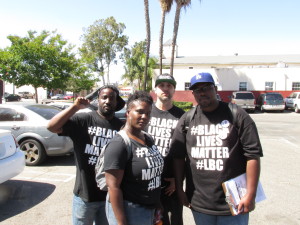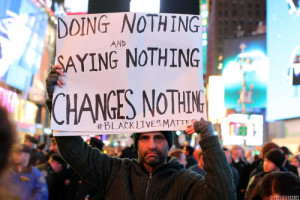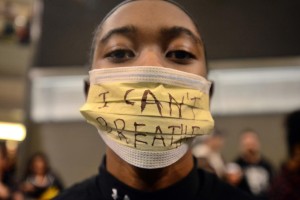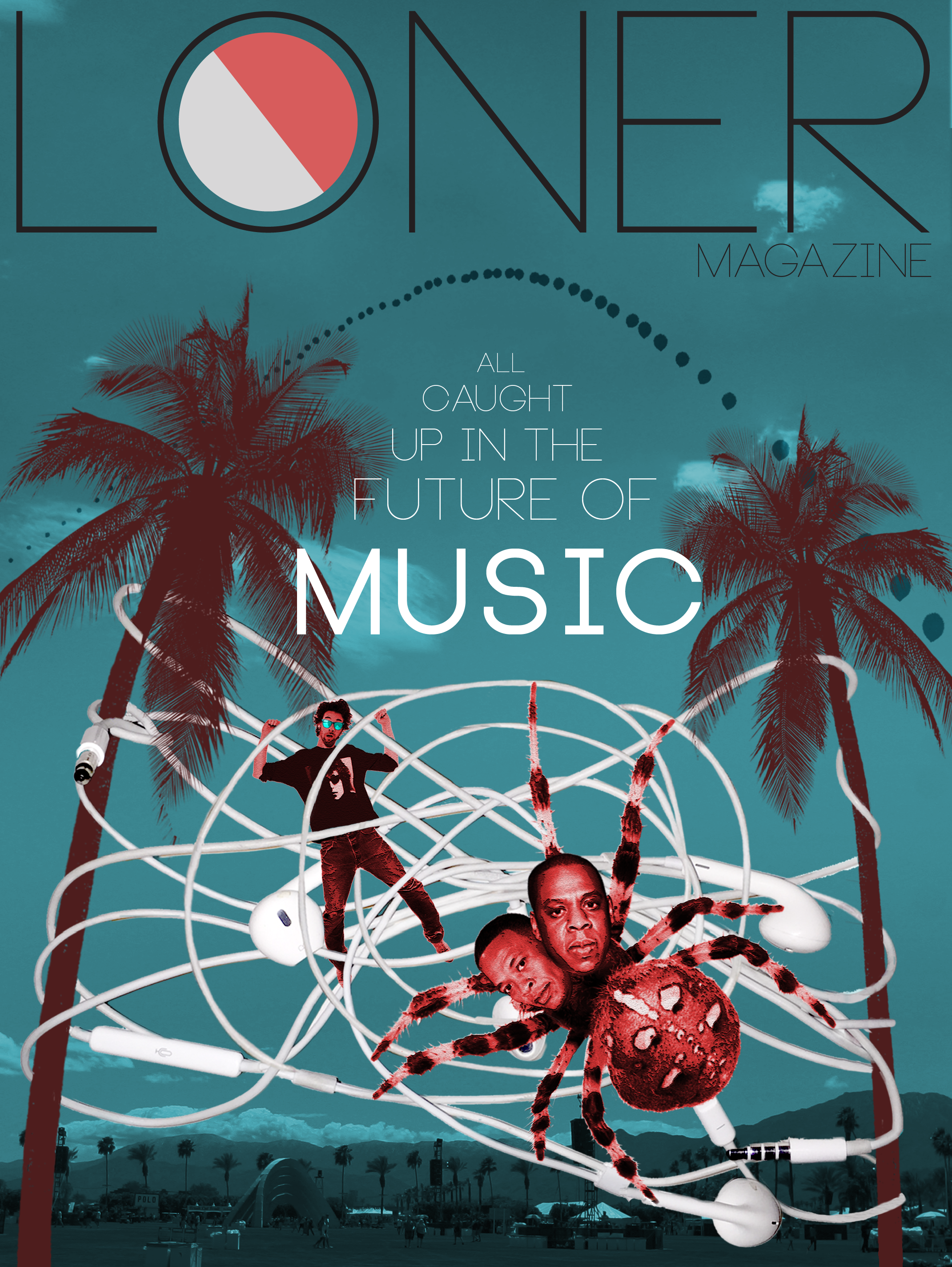BALTIMORE, BLACK MILLENNIALS AND THE NEW MOVEMENT
The first thing you must understand: do not look past the riots. On the contrary, look directly at them. Do you honestly believe–for one second—that any action or attention would’ve been paid to EVIDENCED POLICE SLAYINGS had uproar not been generated? If your answer is yes, history has proved you wrong tenfold. It is the opinion of the timid and the scared that destroying your own community, your own property, does not send a message. So many people are confused. Well, so be it. But you should know, at the outset of this article, that my sympathies are with the rioters, the property destroyers, the incurably angry.
Welcome to the Carmelitos low-income housing project in Long Beach, Cal. Welcome to constant police patrols, the Police State, occupied territory—the U.S. as we know it in 2015. The city where 19-year-old Hector Morejon is still not yet cold, his dreams still not quite dead. The nation where riots baffle the multitudes, where people do not understand other people, where politics is also a dead and shot body.
What is this movement we see mobilizing? Who stands at its forefront, or does anybody? What does it mean for us? What does it say about who we (still) are?
The Long Beach chapter of BLM (BlackLivesMatter) is in its nascency, and there is groundwork to be done. Engagement with the community comes first and we are a curiosity walking into this neighborhood with clipboards and surveys and outspoken ideas. But a welcome curiosity. People peer from windows, shout down, descend to ground level to explain the state of their community. Who are we? What can we do?
 The police have a precinct directly inside the housing project. A police cruiser circles through the neighborhood constantly. Within the first minute of entering the community, the Cop Watch team is already meeting with the patrol car. We are wearing big black buttons that say COP WATCH. We’re carrying cameras. The strategy is: put white people on the Cop Watch team. The sun is blazing, the drought in full swing. The cops ask what we’re doing here, and the truth is–we’re talking to the community about the cops.
The police have a precinct directly inside the housing project. A police cruiser circles through the neighborhood constantly. Within the first minute of entering the community, the Cop Watch team is already meeting with the patrol car. We are wearing big black buttons that say COP WATCH. We’re carrying cameras. The strategy is: put white people on the Cop Watch team. The sun is blazing, the drought in full swing. The cops ask what we’re doing here, and the truth is–we’re talking to the community about the cops.
What exactly is racism, and why? If you think about it, it’s hard to put an exact finger on. What are people afraid of? Why don’t they care? All the education and historical knowledge in the world won’t answer these simple questions. And make no mistake, these people have met it. They have shaken its hand and met the knuckles of its fist.
There are only about 20 people in the Long Beach chapter as of now, but nationally membership is skyrocketing. Really, though, membership is beside the point. This movement was born purely of the streets—the formalization of the cause came later. Still, in the midst of canvassing here in Carmelitos, miles away from protests and riots, it begs the question: What might come of all this momentum?
Members and leaders of the Long Beach chapter are across the board. Age is from the very old to the very young. There are three or four non-black participants today, including myself. Personalities and politics, too, are variegated. There are Marxists, highly-educated liberals, veteran organizers, those who distinguish between pro-black and pro-black consciousness, people who have clearly been involved in the struggle for their entire lives, well-connected university professors, middle school-aged children handing out their first fliers.
Ask Michael Brown (no, not that Michael Brown) how he sees BLM as a movement, and he’ll tell you it’s kicked down the doors of what many working on the ground view as a stuffy, ineffective Old Guard of the black establishment. And indeed, when there are more Black Panthers working as congressmen and congresswomen than there are giving free breakfast to neighborhood kids, that would seem a good litmus test of the state of black politics leading up to the events of Oakland, Ferguson and Baltimore. Of course, the real complaints are about the NAACP, Al Sharpton and the ultra-mainstream institutions of the black struggle.
This is why, Brown says, part of the challenges in the development of BLM is how to view and implement the roles of white allies within the organization.
“There have been a lot of instances of whites moving into black movements, and then the tendency is for them to liberalize rather than to radicalize. Liberal politics isn’t going to lead America to change.”
The power vacuum, for now, seems to be getting filled by the people who similarly have kicked down the doors of silence and obfuscation and blasted their way into the media. Media portrayals aside, of which it would be fantastic to enact a longer condemnation, are, on the bright side of things, actually placing the issue in one of the top spots in national awareness at the moment. Among those people are young black millennials, like Diwaine Smith, now cutting their teeth in local grassroots organizations during the largest black civil rights uprising since the 1970s.
 I asked Diwaine how black millennials see themselves differently from their parents’ generation and other generations.
I asked Diwaine how black millennials see themselves differently from their parents’ generation and other generations.
“I think,” he said, “we’re more aware of our culture, and we know more of our own history. Because you’ve got to understand, back in my parents’ day, the government was covering up a lot of these things that are just out in the open now. Things like crack getting dumped onto the streets. You know, we know these things now. My parents and other people’s parents, a lot of them got tired, and they didn’t want to deal with this stuff because they just wanted to live their lives and they were having fun, but right now we [black millenials] view ourselves as the ones creating the uproar.”
When I asked Diwaine and Kiesha Cotton, another member of the organization, how they saw civil rights issues for other minority groups in relation to BLM, whether they considered BLM as a potential umbrella for not just black rights but minority rights, their response, interestingly enough, was that the issues are separate. I pressed a little more and asked how they viewed minority rights in relation to black rights, whether there’s a continuum, common cause or melding of concerns.
“No,” responded Kiesha. “I mean, I feel empathy toward their problems, but brown community problems are not really the same problems as we have.”
In their view, African-Americans have, and still are, bearing the brunt of minority oppression in the U.S.—there is a natural separation of the challenges each group is facing, but many of the issues span.
 “Black Lives,” said Diwaine, “is an extension to other communities and will set an example for how to solve other issues.”
“Black Lives,” said Diwaine, “is an extension to other communities and will set an example for how to solve other issues.”
However, in the constant open debate atmosphere of the movement, brown lives are never absent from the rhetoric, and the alliance is clear. After the canvassing event, some of the lead organizers invited me to see the Mayweather-Pacquiao fight at their friend Cesar’s apartment. Cesar is a veteran organizer and has worked more recently in organized labor disputes against Wal-Mart. This is a roomful of socially-conscious black and brown activists, union organizers, and their families. Much later, after the fight, there was a rap circle. Please forgive that, in this news article, and coming from me, the description can’t possibly reflect the tone of being there—like any piece of artwork, especially ephemeral artwork, especially music, the spontaneity of the moment can’t perfectly translate to words. Black, white and brown rappers who—you can’t believe how impressed I was—flowed seamlessly, professionally, perfect lyrical executions. For a second you’d have to imagine you’re drunk, and it’s loud, and you’ve spent a hot day in the sun in pursuit of ambitious things, and all the momentum is behind you and your comrades, a nation burning with revolt and change outside the windows, and hearing the poetry is important—the crucial moment when the rhyme slows and you glimpse the most important lines:
“…we live in a nation of emotional enslavement / our sweat and tears create the pavement…”
What exactly is racism, and why? Who are the people who would prefer to have us live apart, and for all these beautiful moments and friendships to die?
